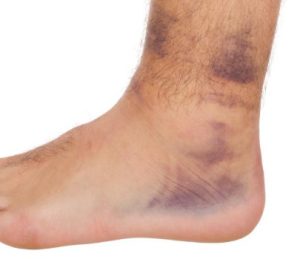
Ankle sprains are by far the most underestimated injury in the lower limb.
A large proportion of this potentially develops from the culture of sport to downplay the severity of various injuries that are common. A common phased used is “it’s just an ankle sprain”. However, the consequences of underestimating an ankle sprain can be severe and mismanagement in the early phase can lead to long term issues.
Chronic ankle instability is a secondary condition that develops following severe ankle sprains or ankle sprains that have not been effectively treated in the early stage. This can be a frustrating condition that persists for months and even years following an initial ankle sprain. The research tells us that 30% of all initial ankle sprains (some even argue the true number is much higher due to under-reporting) will develop chronic ankle instability, and out of those, 80% will develop some level of post-traumatic osteoarthritis of the ankle joint. Considering the number of ankle sprains that occur in the population, that is a huge number!
Symptoms of chronic ankle instability include ongoing pain, a feeling of instability or looseness in the ankle joint, difficulty walking or standing, and persistent swelling. Whilst there is a small population of people who may require surgery, the vast majority of people can be managed with a conservative rehabilitation program. Unfortunately, ankle sprains are often underestimated, and many patients do not seek advice and appropriate early management.
Treatment for chronic ankle instability typically involves dealing with any ongoing swelling or joint inflammation that may be persisting, followed by a rigorous rehabilitation program which targets balance, lower limb coordination, strength and ankle motion.
However, a better way to manage chronic ankle instability would be to minimise the chances of you developing it in the first place!
If you sprain your ankle for the first time, rather than playing it off as just another benign injury, make sure to seek the proper advice and management. Getting this right early will make an impact on your likelihood of having issues down the track. Contact any of our locations for more information.









